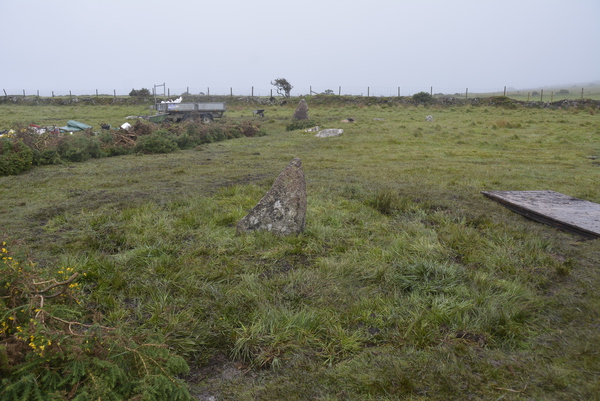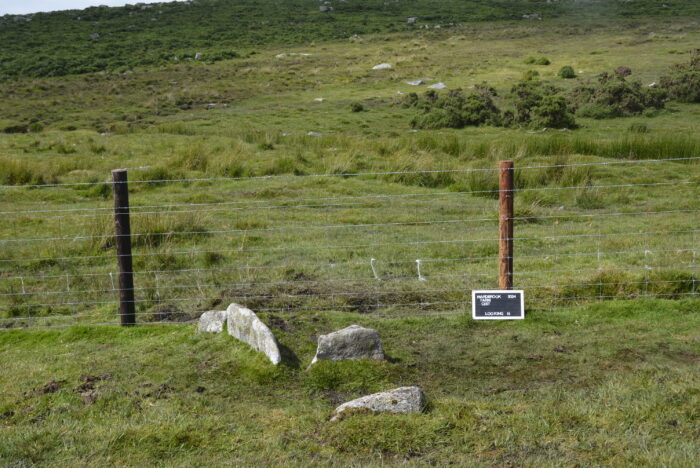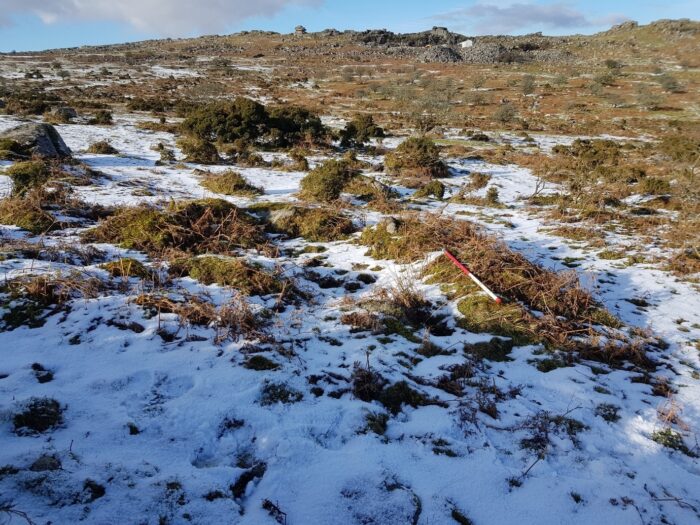
Beef farmers are invited to join the OPTICK Project
To help manage tick-borne risks.
Sara Tipler
Emblance Downs Stone Circles are an important prehistoric site on Bodmin Moor, featuring two distinct stone circles. The western circle is well-preserved, with 6 upright stones and at least 1 fallen, while the eastern circle is more difficult to see, with only 2 stumps and 4 fallen stones. These circles, dating back to the Bronze Age, are thought to have been used for ceremonial purposes by early inhabitants, adding mystery to the landscape.
2500-1500 BC
The stone circles are constructed during the Bronze Age.
1800s
And identified as a key prehistoric monument on Bodmin Moor.
Present Day
The site is conserved and appreciated for its historical and cultural significance.
Emblance Downs Stone Circles, located on Bodmin Moor, date back to the Bronze Age, around 2500-1500 BC. The site consists of two distinct stone circles, likely used for ceremonial or ritual purposes by early communities. The circles are part of a rich prehistoric landscape, which includes nearby burial mounds and standing stones. Archaeological evidence suggests that the site played a significant role in the spiritual and social lives of the people who once inhabited this area. Today, it stands as a remarkable link to Cornwall’s ancient past.
Emblance Downs Stone Circles are a crucial part of Cornwall’s prehistoric landscape, offering a glimpse into the lives of Bronze Age communities. The circles are thought to have been used for ceremonies, possibly marking significant celestial events or seasonal rituals. The location of the stone circles within a wider area of ancient monuments, such as burial mounds and other standing stones, suggests that this was a key spiritual site for early inhabitants.
These stone circles connect us to a time when people lived closely with the land and the stars, shaping their society around the natural world. By studying the layout and positioning of the stones, archaeologists have gained insights into the social and religious practices of prehistoric Cornwall, making Emblance Downs an important site for understanding the region’s ancient heritage.
Cornwall is a region rich in folklore, and it’s likely the circles have inspired local imagination over the centuries. Similar stone circles across the British Isles are often linked to mysterious or supernatural stories, with some believed to be sites of ancient rituals or meeting places for druids.
One common theme in Cornish folklore is the idea that stone circles are people or creatures who were turned to stone. In some stories, these stones represent groups of dancers or giants who were petrified for disrespecting sacred rules or disturbing the peace. It is easy to imagine that the isolated, windswept landscape of Emblance Downs, with its ancient stones standing in silence, might have sparked such beliefs. The sheer age of the site adds to its mystical atmosphere.
Additionally, the position of the circles, with clear views of the surrounding moorland and distant hills, could have led people to believe that they held special significance for early inhabitants. With Cornwall’s deep ties to the supernatural, from piskies to giants, Emblance Downs would fit right into a landscape where the line between reality and myth has always been blurred. Whether ancient markers of celestial events or meeting places for ancient rites, these stone circles have a timeless, otherworldly quality that still fascinates visitors today.


Gallery












The Emblance Downs Stone Circles are a key feature of Bodmin Moor’s prehistoric landscape. These two distinct stone circles, dating back to the Bronze Age, are believed to have been used for ceremonial purposes. The site’s remote, open moorland setting adds to its sense of ancient mystery, with many of the original stones still visible. Though some stones have fallen over time, they remain partially buried in the turf, blending into the natural surroundings. The alignment of the circles and the panoramic views make the site an important link to the spiritual and cultural practices of prehistoric Cornwall.


The Emblance Downs Stone Circles are set within the rugged and windswept terrain of Bodmin Moor, an area rich in unique flora and fauna. Hardy plants such as gorse, heather and various grasses thrive in the nutrient-poor soils, creating a striking landscape of natural beauty. These plants provide shelter and food for a variety of wildlife, including birds like skylarks and meadow pipits, as well as small mammals and insects. Grazing animals, particularly ponies and sheep, are a common sight on the moor, contributing to its characteristic appearance and maintaining the open, untamed environment.
Visitors to Emblance Downs Stone Circles can help protect this ancient site by staying on designated paths to avoid damaging the fragile ground and stones. Please refrain from touching or climbing on the stones to prevent further wear and tear. Keeping dogs on leads helps prevent disturbances to local wildlife, while removing litter ensures the site remains clean and preserved. By respecting the landscape, visitors help maintain this important piece of Cornwall’s heritage for future generations.
Conserving the Emblance Downs Stone Circles presents both opportunities and challenges. One of the main threats to the site is natural erosion caused by the harsh moorland weather. Wind, rain and frost gradually wear away at the stones and the surrounding ground, leading to the stones becoming unstable over time. Additionally, livestock grazing on the moor, particularly ponies and sheep, can disturb the soil around the stones, exacerbating erosion.
Efforts to preserve the site include regular monitoring and maintenance, such as stabilising any stones at risk of toppling and addressing erosion damage. The remoteness of the location helps protect it from heavy visitor traffic, but it also makes conservation work more difficult to carry out. Ongoing conservation work ensures that this important prehistoric site is preserved for future generations to appreciate and study.














